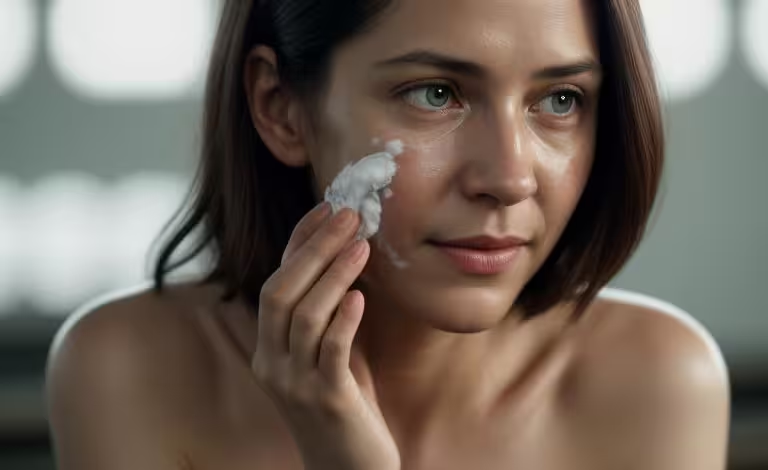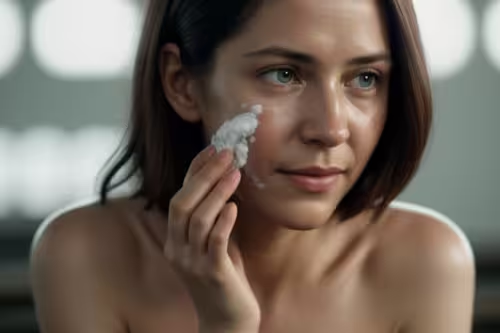Is Calamine Lotion Good for Heat Rash?


Heat rash, also known as prickly heat, is a common skin condition that occurs during hot and humid weather. The rash appears as small, itchy bumps or blisters, often causing discomfort and irritation. When seeking relief, you might wonder, “Is Calamine Lotion good for heat rash?” This article will explore the benefits of Calamine Lotion and other treatment options to help you make an informed decision.
Is Calamine Lotion good for heat rash?
Calamine Lotion is a popular over-the-counter remedy for various skin conditions, including heat rash. To understand if Calamine Lotion is good for heat rash, it is essential to explore its active ingredients, mechanism of action, and potential benefits and limitations.

Active Ingredients in Calamine Lotion
Calamine Lotion typically contains a mixture of zinc oxide and ferric oxide. Zinc oxide has anti-inflammatory, antimicrobial, and astringent properties, which can help soothe itchy, irritated skin and reduce redness. Ferric oxide, or iron (III) oxide, acts as a pigment, giving Calamine Lotion its characteristic pink color. Ferric oxide also has some minor astringent properties.
Mechanism of Action
When applied to the skin, Calamine Lotion forms a protective barrier that helps shield the skin from external irritants and reduces friction. The zinc oxide in Calamine Lotion can help reduce inflammation and itching by constricting blood vessels and decreasing the flow of inflammatory cells to the affected area. Additionally, zinc oxide can help dry out weeping or oozing skin lesions, promoting the formation of a protective scab.
Potential Benefits of Calamine Lotion for Heat Rash
Applying Calamine Lotion to heat rash may provide temporary relief by cooling and drying the affected area. The astringent properties of zinc oxide can help absorb excess moisture from the skin, reducing the risk of further skin irritation and friction. Furthermore, the anti-inflammatory effects of zinc oxide can help alleviate redness, swelling, and itching associated with heat rash.
Limitations of Calamine Lotion for Heat Rash
While Calamine Lotion can help soothe and relieve symptoms of heat rash, it is not a cure for the condition. Heat rash occurs when sweat ducts become clogged, trapping sweat beneath the skin and causing inflammation. Calamine Lotion does not address the root cause of heat rash, and its effects are primarily symptomatic. Therefore, managing environmental factors contributing to heat rash and combining Calamine Lotion with other treatment methods is essential for optimal relief and prevention.

Additionally, Calamine Lotion may not be suitable for all individuals or skin types. Some people may experience skin irritation, dryness, or allergic reactions after using Calamine Lotion. Always perform a patch test before applying Calamine Lotion to a large area of the skin, especially if you have sensitive skin or a history of allergies.
Alternative Heat Rash Remedies
-
Cool Compresses
Applying a cool, wet compress to the affected area can help reduce inflammation and soothe itchy skin. The cold temperature constricts blood vessels, which can help alleviate redness and swelling. To create a compress, soak a clean cloth in cold water, wring it out, and place it on the rash for 10-15 minutes. Repeat this process as needed throughout the day for relief.
-
Oatmeal Baths
Adding colloidal oatmeal to a bath can help relieve itching and irritation caused by heat rash. Oatmeal contains anti-inflammatory properties that can soothe and calm irritated skin. To prepare an oatmeal bath, add 1-2 cups of colloidal oatmeal to a warm (not hot) bath and soak for 15-20 minutes. Gently pat the skin dry after the bath to avoid further irritation.
-
Stay Cool
Avoiding excessive heat and humidity is essential in preventing and managing heat rash. Stay in air-conditioned spaces, wear loose-fitting clothing, and avoid strenuous activities during peak heat hours. If air conditioning is not available, use fans or portable air coolers to maintain a comfortable temperature. Additionally, consider taking cool showers or baths to help lower your body temperature and reduce the risk of heat rash.
-
Gentle Cleansers
Using mild, fragrance-free cleansers to wash the affected area is crucial in managing heat rash. Harsh soaps can further irritate the skin, exacerbating symptoms and delaying healing. Opt for gentle, hypoallergenic cleansers formulated for sensitive skin. When washing, use lukewarm water and avoid scrubbing or rubbing the skin. Instead, gently pat the area dry with a soft towel.
-
Moisturize
While it may seem counterintuitive, keeping the skin moisturized can help prevent heat rash by reducing friction and promoting sweat evaporation. Opt for light, non-greasy lotions or creams that won’t clog pores. Apply the moisturizer after bathing or showering, while the skin is still damp, to lock in moisture. Reapply the moisturizer throughout the day as needed, focusing on areas prone to heat rash.
-
Avoid Irritants
Products containing alcohol, menthol, or fragrances can exacerbate heat rash symptoms. These ingredients can cause skin irritation, redness, and itching. Instead, choose products specifically formulated for sensitive skin or those labeled “fragrance-free” and “alcohol-free.” Always perform a patch test before using a new product, especially if you have a history of sensitive skin or allergies.
-
Essential Oils
Some essential oils, such as lavender, chamomile, and tea tree oil, have anti-inflammatory and soothing properties that can help alleviate heat rash symptoms. Dilute essential oils with a carrier oil, such as coconut or jojoba oil, before applying them to the skin. Mix 2-3 drops of essential oil per teaspoon of carrier oil and gently massage the mixture onto the affected area. Perform a patch test before using any new essential oil, as some people may have allergic reactions.
-
Dietary Considerations
Certain foods can contribute to heat rash by increasing body temperature and promoting sweating. Spicy foods, caffeine, and alcohol can all raise body temperature and exacerbate heat rash symptoms. Limit your consumption of these foods and beverages, especially during hot weather or when engaging in physical activities that may cause sweating. Instead, focus on hydrating, cooling foods like water-rich fruits and vegetables, such as watermelon, cucumber, and leafy greens.
-
Breathable Fabrics
Wearing breathable, loose-fitting clothing made from natural fibers like cotton, linen, or silk can help prevent heat rash by allowing the skin to breathe and reducing friction. Avoid synthetic fabrics like polyester or nylon, which can trap heat and moisture, creating an ideal environment for heat rash to develop.
-
Lifestyle Adjustments
Managing stress and getting adequate sleep can help boost your immune system and reduce the likelihood of developing heat rash. High stress levels and poor sleep can weaken the immune system, making it more challenging for the body to fight off infections and heal from skin conditions like heat rash. Practice stress-reducing activities like meditation, yoga, or deep breathing exercises, and prioritize getting 7-9 hours of sleep each night.
When to Consult a Healthcare Professional
While heat rash is typically a mild condition, it can sometimes lead to complications or indicate an underlying health issue. Consult a healthcare professional if you experience any of the following:
- Severe or persistent symptoms
- Signs of infection, such as increased pain, swelling, or pus
- Fever or chills
- Difficulty breathing or swallowing
- Rash that spreads rapidly or covers a large area of the body
So, is Calamine Lotion good for heat rash? Yes, it can provide temporary relief by soothing itchy, irritated skin. However, managing environmental factors and combining Calamine Lotion with other treatment methods is essential for optimal relief and prevention. If you experience severe or persistent symptoms, consult a healthcare professional for proper evaluation and treatment.
